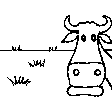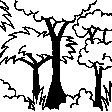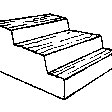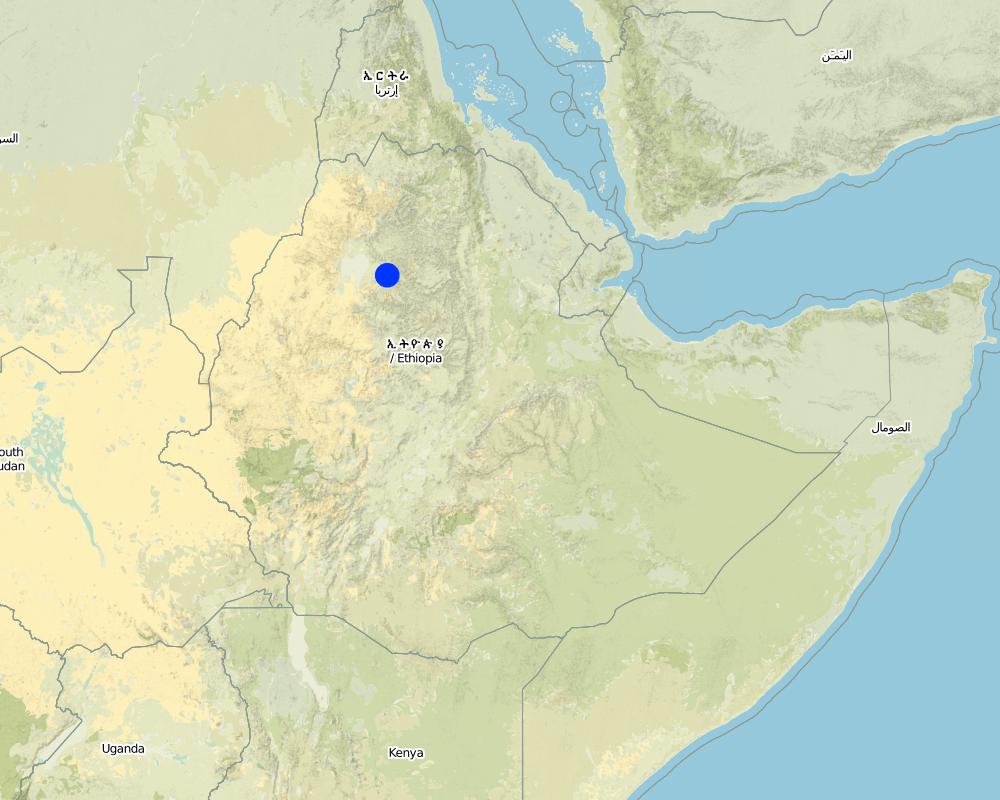Paved and grassed waterways [Ethiopia]
- Creation:
- Update:
- Compiler: Berhanu Fentaw
- Editor: –
- Reviewers: Fabian Ottiger, Alexandra Gavilano
Feses (Amharic)
technologies_1079 - Ethiopia
View sections
Expand all Collapse all1. General information
1.2 Contact details of resource persons and institutions involved in the assessment and documentation of the Technology
SLM specialist:
Estifanos Zena
Ministry of Agriculture and Rural Development, Addis Ababa
Ethiopia
Name of the institution(s) which facilitated the documentation/ evaluation of the Technology (if relevant)
Ministry of Agriculture and Rural Development of Ethiopia (Ministry of Agriculture and Rural Development) - Ethiopia1.3 Conditions regarding the use of data documented through WOCAT
The compiler and key resource person(s) accept the conditions regarding the use of data documented through WOCAT:
Yes
2. Description of the SLM Technology
2.1 Short description of the Technology
Definition of the Technology:
A waterway is an artficial drainage channel constructed along the steepest slope to receive runoff from cutoff drains and graded structures and drain to the natural waterway safely.
2.2 Detailed description of the Technology
Description:
A vegetative waterway is constructed in areas where stone is not available and in gentle slopes. Paved waterways are suitable in steeper terrains and areas with large amount of stones. The waterway carries excess water to the river, reservoirs or gullies safely with out creating erosion. It is applicable in all areas where excess water is generated when high rains are received which are beyound the intake capacity of soils. The excess water then will have to be disposed sefely to natural outlets. Waterways are established a year or two before cutoff drains and field structures are constructed. Vegetative waterways are formed by digging earth channel across the contour in the direction of flow. After making the channel suitable grass species are planted or are made to establish naturally. Maintenance is very vital in waterways. Breaks in channel or embankments, moving of silt deposited or keeping the grass shorter in order that it does not obstract flow. Vegetative waterways could be stablized by planting short growing grasses, sodding or letting natural growth.
2.5 Country/ region/ locations where the Technology has been applied and which are covered by this assessment
Country:
Ethiopia
Region/ State/ Province:
South Gonder
Further specification of location:
Genbegna, Ayiba, Megish
Specify the spread of the Technology:
- evenly spread over an area
If precise area is not known, indicate approximate area covered:
- 10-100 km2
Comments:
The technology is practiced in 34 Kebeles in the Woreda.
Map
×2.6 Date of implementation
If precise year is not known, indicate approximate date:
- more than 50 years ago (traditional)
2.7 Introduction of the Technology
Specify how the Technology was introduced:
- through projects/ external interventions
Comments (type of project, etc.):
introduced and farmers experience
3. Classification of the SLM Technology
3.1 Main purpose(s) of the Technology
- reduce, prevent, restore land degradation
3.2 Current land use type(s) where the Technology is applied
Land use mixed within the same land unit:
Yes
Specify mixed land use (crops/ grazing/ trees):
- Agro-silvopastoralism

Cropland
- Annual cropping
- teff
Number of growing seasons per year:
- 1
Specify:
Longest growing period in days: 210 Longest growing period from month to month: May - Dec

Grazing land
Extensive grazing:
- Semi-nomadic pastoralism

Forest/ woodlands
- (Semi-)natural forests/ woodlands
- Tree plantation, afforestation
(Semi-)natural forests/ woodlands: Specify management type:
- Selective felling
Products and services:
- Fuelwood
- Grazing/ browsing
- Nature conservation/ protection
Comments:
Major land use problems (compiler’s opinion): soil erosion, flooding, decline of production and productivity.
Major land use problems (land users’ perception): soil erosion, shortage of feed and fodder, low productivity.
3.4 Water supply
Water supply for the land on which the Technology is applied:
- rainfed
3.5 SLM group to which the Technology belongs
- cross-slope measure
- surface water management (spring, river, lakes, sea)
3.6 SLM measures comprising the Technology

agronomic measures
- A7: Others

vegetative measures
- V2: Grasses and perennial herbaceous plants

structural measures
- S3: Graded ditches, channels, waterways
Comments:
Main measures: vegetative measures, structural measures
Type of agronomic measures: early planting
Type of vegetative measures: aligned: -graded strips *<sup>3</sup>
3.7 Main types of land degradation addressed by the Technology

soil erosion by water
- Wg: gully erosion/ gullying
Comments:
Main type of degradation addressed: Wg: gully erosion / gullying
Secondary types of degradation addressed: Wg: gully erosion / gullying
3.8 Prevention, reduction, or restoration of land degradation
Specify the goal of the Technology with regard to land degradation:
- reduce land degradation
Comments:
Secondary goals: prevention of land degradation, rehabilitation / reclamation of denuded land
4. Technical specifications, implementation activities, inputs, and costs
4.1 Technical drawing of the Technology
Technical specifications (related to technical drawing):
Technical knowledge required for field staff / advisors: moderate
Technical knowledge required for land users: high
Main technical functions: control of concentrated runoff: drain / divert
Secondary technical functions: control of dispersed runoff: retain / trap, control of concentrated runoff: retain / trap
Early planting
Material/ species: grass
Remarks: aligment layout
Aligned: -graded strips
Vegetative material: G : grass
Grass species: local grass
Waterway
Depth of ditches/pits/dams (m): 0.3-0.4m
Width of ditches/pits/dams (m): 2-3m
Length of ditches/pits/dams (m): 50-100m
Construction material (stone): medium sized (big and small stones avoided)
Slope (which determines the spacing indicated above): 15%
If the original slope has changed as a result of the Technology, the slope today is: 15%
Lateral gradient along the structure: 20%
Other type of management: change of management / intensity level - controlling, maintaining and guarding.
4.2 General information regarding the calculation of inputs and costs
other/ national currency (specify):
Birr
If relevant, indicate exchange rate from USD to local currency (e.g. 1 USD = 79.9 Brazilian Real): 1 USD =:
8.6
Indicate average wage cost of hired labour per day:
0.80
4.3 Establishment activities
| Activity | Timing (season) | |
|---|---|---|
| 1. | determine the drainage area | dry season |
| 2. | excavate and pile the soil on one or both side | dry season |
| 3. | sods-local grass | dry season |
| 4. | excavation and stone paving | dry season |
| 5. | stone check | dry season |
4.5 Maintenance/ recurrent activities
| Activity | Timing/ frequency | |
|---|---|---|
| 1. | Collecting planting materials | beginning of rainy season / |
| 2. | Planting on pits | rainy season / |
| 3. | resod-local grass | after rain /once |
| 4. | repairing the broken part | after ran/once |
| 5. | Collection of stones | dry season / annual |
| 6. | Planting grass | during rains / annual |
4.7 Most important factors affecting the costs
Describe the most determinate factors affecting the costs:
stone availability, finance, topography
5. Natural and human environment
5.1 Climate
Annual rainfall
- < 250 mm
- 251-500 mm
- 501-750 mm
- 751-1,000 mm
- 1,001-1,500 mm
- 1,501-2,000 mm
- 2,001-3,000 mm
- 3,001-4,000 mm
- > 4,000 mm
Specifications/ comments on rainfall:
It ranges between 1200-1599 mm
Agro-climatic zone
- humid
- sub-humid
Subhumid (ranked 1) in woina dega
Humid (ranked 2)
5.2 Topography
Slopes on average:
- flat (0-2%)
- gentle (3-5%)
- moderate (6-10%)
- rolling (11-15%)
- hilly (16-30%)
- steep (31-60%)
- very steep (>60%)
Landforms:
- plateau/plains
- ridges
- mountain slopes
- hill slopes
- footslopes
- valley floors
Altitudinal zone:
- 0-100 m a.s.l.
- 101-500 m a.s.l.
- 501-1,000 m a.s.l.
- 1,001-1,500 m a.s.l.
- 1,501-2,000 m a.s.l.
- 2,001-2,500 m a.s.l.
- 2,501-3,000 m a.s.l.
- 3,001-4,000 m a.s.l.
- > 4,000 m a.s.l.
Comments and further specifications on topography:
Altitudinal zone: Ranges between 1500-4033 m a.s.l.
Landforms: Mountain slopes (ranked 1), ridges (ranked 2) and plateau/plains as well as hill slopes (both ranked 3)
Slopes on average: Hilly (ranked 1), rolling (ranked 2) and steep (ranked 3)
5.3 Soils
Soil depth on average:
- very shallow (0-20 cm)
- shallow (21-50 cm)
- moderately deep (51-80 cm)
- deep (81-120 cm)
- very deep (> 120 cm)
Soil texture (topsoil):
- fine/ heavy (clay)
Topsoil organic matter:
- low (<1%)
If available, attach full soil description or specify the available information, e.g. soil type, soil PH/ acidity, Cation Exchange Capacity, nitrogen, salinity etc.
Soil depth on average: Very shallow (ranked 1), shallow (ranked 2) and moderately deep (ranked 3)
Soil texture: Fine/heavy ( on the top/surface, ranked 1) also medium (at depth , ranked 2) and coarse/light (ranked 3)
Soil fertility is low (ranked 1), medium (ranked 2) and high (ranked 3)
Soil drainage/infiltration is good (ranked 1), medium (ranked 2) and poor (ranked 3)
Soil water storage capacity is low (ranked 1), medium (ranked 2) and high (ranked 3)
5.6 Characteristics of land users applying the Technology
Market orientation of production system:
- subsistence (self-supply)
Off-farm income:
- less than 10% of all income
Relative level of wealth:
- very poor
- poor
Level of mechanization:
- manual work
- animal traction
Indicate other relevant characteristics of the land users:
Population density: 200-500 persons/km2
Annual population growth: 2% - 3%
40% of the land users are poor and own 20% of the land.
60% of the land users are poor and own 30% of the land.
Level of mechanization is animal traction (ranked 1) and manual labour (ranked 2)
Market orientation of production system: Also mixed (subsistence/ commercial)
5.7 Average area of land used by land users applying the Technology
- < 0.5 ha
- 0.5-1 ha
- 1-2 ha
- 2-5 ha
- 5-15 ha
- 15-50 ha
- 50-100 ha
- 100-500 ha
- 500-1,000 ha
- 1,000-10,000 ha
- > 10,000 ha
Comments:
Average area of land owned or leased by land users applying the Technology: 0.5-0.75 ha
5.8 Land ownership, land use rights, and water use rights
Land ownership:
- state
Land use rights:
- individual
6. Impacts and concluding statements
6.1 On-site impacts the Technology has shown
Socio-economic impacts
Production
crop production
fodder production
fodder quality
production area
Income and costs
farm income
Socio-cultural impacts
SLM/ land degradation knowledge
Ecological impacts
Water cycle/ runoff
excess water drainage
Soil
soil loss
Other ecological impacts
Soil fertility
6.2 Off-site impacts the Technology has shown
downstream flooding
downstream siltation
6.4 Cost-benefit analysis
How do the benefits compare with the establishment costs (from land users’ perspective)?
Short-term returns:
positive
Long-term returns:
very positive
How do the benefits compare with the maintenance/ recurrent costs (from land users' perspective)?
Short-term returns:
positive
Long-term returns:
positive
6.5 Adoption of the Technology
Of all those who have adopted the Technology, how many did so spontaneously, i.e. without receiving any material incentives/ payments?
- 91-100%
Comments:
5 land user families have adopted the Technology without any external material support
Comments on spontaneous adoption: estimates
There is a moderate trend towards spontaneous adoption of the Technology
Comments on adoption trend: Waterways require high labour and material, which a poor farmer can not have. Moreover, the land taken by the measures will be prohibitive to be practiced by a smallholder farmers.
6.7 Strengths/ advantages/ opportunities of the Technology
| Strengths/ advantages/ opportunities in the compiler’s or other key resource person’s view |
|---|
|
due to increased benefit obtained by the community and awarness created How can they be sustained / enhanced? better/proper followup, maintenance, monitoring and evalution, expansion of the technology. Establish bylaws,regulations to protect assetes created. |
|
increased fodder production How can they be sustained / enhanced? provision of suitable planted material. |
7. References and links
7.1 Methods/ sources of information
Links and modules
Expand all Collapse allLinks
No links
Modules
No modules


